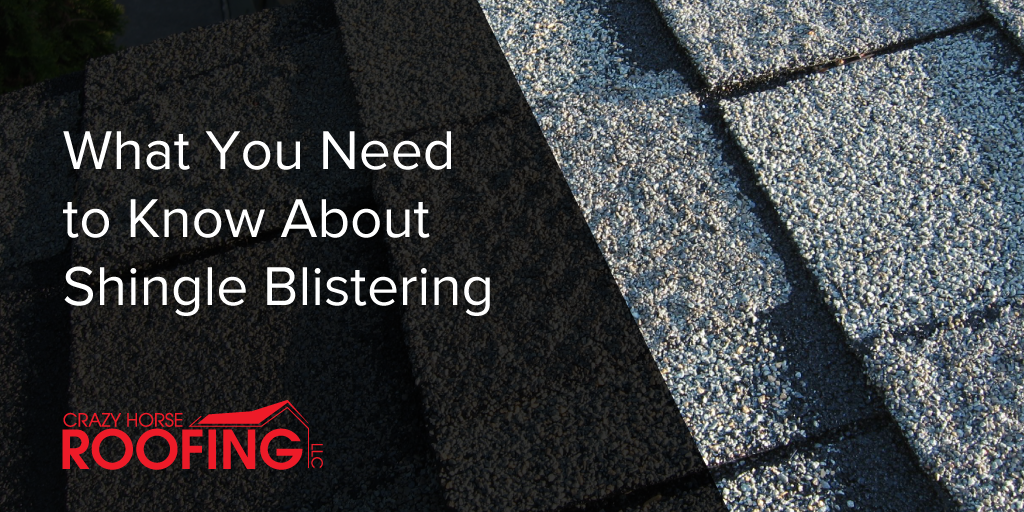If you’re a Colorado homeowner, you may have noticed shingles on your roof that seem to be blistering. This can be a controversial subject matter, as some people believe that these blisters are damaging and need to be fixed right away, while others believe that they are simply just cosmetic defects. Here at Crazy Horse Roofing, we want to help give you the best roof protection possible and understand what shingle blistering means. Keep reading for more information about shingle blistering and how it can affect your home.
What Are Blistering Shingles
Blisters are a clear indication that there is a problem with your roof. They appear as bubbles beneath the top layer of shingles and can be caused by manufacturing faults or a lack of ventilation on your homes’ roofs during production, causing them to be exposed for an extended period of time (this would cause heat application). When certain resins cure instead of following construction requirements, extra gases are released, causing blisters to form around untreated patches. These excess releases are caused by different compounds consuming up oxygen molecules nearby, causing blisters to form around untreated patches.
Too much humidity is one of the most common causes of blistering in the house. When there isn’t enough ventilation or air conditioning, it can create a hot and humid environment, causing your shingles to peel off from blisters on their surface over time because of the elevated temperatures.
To avoid this problem, make sure that any necessary repairs, such as replacing roof panels, are completed before they become fatal errors.
Roof Damage
The roof’s life expectancy will be reduced due to its thinness and blisters. These areas are more exposed to the elements, causing them to wear down faster than other parts, especially with all this windy weather we’ve been having recently. What will be the result? Depending on how much exposure it gets, crater-like formations in between those bothersome shingle grains missing one day could be right around the corner for you as well (elevated property might increase chances).
Prevention and Inspection
When your shingles begin to blister, it’s an indication that they’ve outlived their effectiveness and should be replaced. Fortunately, this can be prevented by ensuring enough ventilation in the attic or roof area and having a professional evaluate them after installation to ensure you don’t have any issues below.
Blistering is an issue that can be difficult and expensive to repair, but it doesn’t have to wait. Contact Crazy Horse Roofing today for a free inspection. The best way is to call us at (970) 397-5306 or connect with Crazy Horse Roofing Online.







